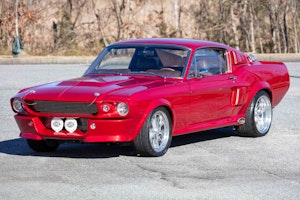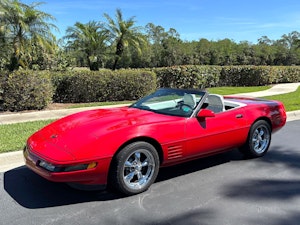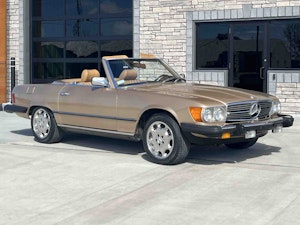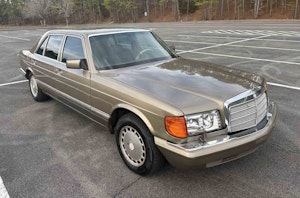Media | Articles
One-off Simca 936 Prototype Shows What a French Mini Could Have Looked Like
Truly revolutionary, the original Mini released in 1959 spawned dozens of competitors from all over the world. One of the best-known Mini rivals was the Autobianchi A112, which landed a decade after its rival yet managed to take Italy by storm. One of the more obscure Mini rivals was the Simca 936. The model, which didn’t reach production, offered several improvements over the Mini, including a four-door body.
Simca launched the project in 1963. Roger Dumas, the company’s head of design, was seemingly alarmed by the growing number of Mini models he spotted parked on Parisian streets. He believed that Simca, which had historically lagged behind (and, some years, far behind) key rivals such as Renault and Peugeot, could reach new buyers and boost its annual sales by launching France’s first true alternative to the Mini. The name 936 was chosen early on, though the car was sometimes referred to as the Isabelle internally.



Built in 1966, the 936 prototype stretched about 121 inches long. For context, the Mini measured around 120 inches from bumper to bumper. Simca’s take on the idea of a tiny city car was roughly three inches wider and two inches taller than its intended competitor, and its wheelbase was about two inches longer.
Visually, the 936 looked like nothing else on the road, including the Mini and the other cars in the Simca portfolio. And, viewed in the context of the era it was born in, it featured forward-thinking styling. Its boxy lines previewed some of the design trends that would permeate the European automotive industry in the late 1960s. Its headlights were rectangular rather than round, its door handles were neatly integrated into the beltline kink, and it featured thin strips of bright trim that added a touch of flair to the silhouette. The 10-inch steel wheels were pushed as far out as possible to create a relatively spacious cabin with four seats.

Don’t let the side-mounted radiator fool you: the 936 wasn’t a Xerox copy of the Mini. Power came from a water-cooled, 1.0-liter four-cylinder engine sourced from the 1000 and mounted transversely. It made 40 horsepower at 5,400 rpm and spun the front wheels via a three-speed semi-automatic transmission.
Marketplace
Buy and sell classics with confidence
Had it been built, the 936 would have been revolutionary from a technical standpoint. Front-wheel drive wasn’t rare in the 1960s, especially not on the French market, but Simca’s now very conventional layout, which situated the transmission and engine transversely, was arguably more advanced than the layout used by its rivals. In the Mini, the transversely mounted engine sits on top of the transmission. In the Renault 4, the longitudinally mounted engine sits behind (!) the transmission. The Autobianchi Primula, which was a test run for Fiat’s shift to front-wheel drive, was one of the few cars built in the 1960s with a drivetrain that placed the transmission behind a transversely mounted engine.
With four doors, a transversely mounted engine, and front-wheel drive, the 936 set the template for the city car as we know it in 2025. Was it pretty? You tell me. Was it innovative? There’s no debate there. And yet, it remained at the prototype stage, and the example pictured here is the only one that was built.



Not everyone within Simca liked the idea of bringing the 936 to production. Some argued that it would cost too much to build, while others worried that it wouldn’t sell in large enough numbers to justify the investment. Keep in mind that Simca, which was closely linked to Fiat for several decades, got pelted into the complex latticework of Chrysler-owned brands in the early 1960s. I was told by one of the historians who works in the unofficial Simca museum located in Poissy, France, that some executives believed Simca didn’t need to develop a city car from scratch. “Just take the Hillman Imp and call it a day,” they shrugged.
Realistically, all of these reasons likely played a role in the 936’s demise. But while this boxy, four-door city car never saw the light that awaits at the end of the production line, the lessons learned from the project helped Simca develop the 1100 released in 1967. It was bigger than the 936 in every direction to compete in a different segment but it featured front-wheel drive, a transversely mounted engine, four doors, and a trunk accessed via a large hatch. It was the first French car to tick all of these boxes. Hundreds followed.



















It looks so, so French!
A close friend of mine’s Family had a Simca at the same time that I had a FIAT…
You’d have thought that AXIS had won… or at least gotten revenge.